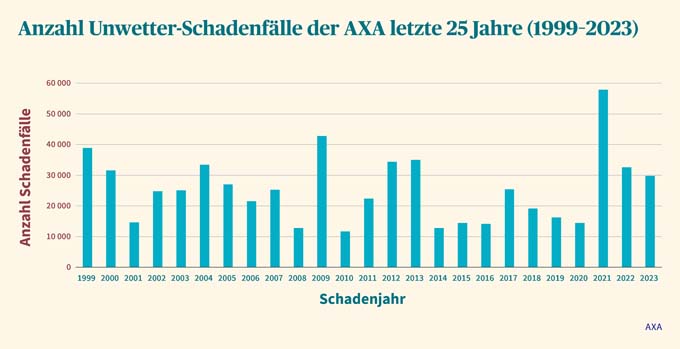Helvetia's occupational benefit scheme is on a solid footing - number of insured persons increases
Helvetia Insurance's group life business remains on a stable footing. In an environment of recovering financial markets compared to the previous year, business development continued to be characterized by the ongoing shift in the number of insured persons towards semi-autonomous solutions.

Helvetia is reporting a result of CHF 48.9 million for the 2023 financial year (2022: CHF 56.8 million). At the same time, the surplus fund in the business subject to the minimum quota was further increased in the reporting year and currently amounts to CHF 175.9 million (previous year: CHF 162.5 million).
Helvetia BVG Invest with assets under management of more than CHF 1 billion.
The Helvetia LOB Invest Collective Foundation benefited from the continuing trend towards semi-autonomous solutions and achieved assets under management of over CHF 1 billion for the first time in 2023. The ongoing shift in the number of insured persons towards semi-autonomous solutions is also reflected in the fact that the number of all active insured persons at Helvetia increased by 8.5% to 216,700 in 2023 (2022: 199,708), while the number of fully insured persons fell by 7.9% to 72,741 (2022: 78,947). Accordingly, operating expenses per active insured person were reduced from CHF 429 to CHF 420.
Hedwig Ulmer, Head of Pension Provision and Member of the Executive Management Switzerland at Helvetia, is committed to a broad diversification of the product range: "Helvetia offers a full range of occupational pension solutions. This means that our customers can be optimally served according to their individual preferences and needs."
Slightly lower premium volume compared to the previous year
In the occupational benefits business, Helvetia recorded a premium volume of CHF 1,776.3 million, which is around 5.0 % lower than in the previous year (2022: CHF 1,861.6 million). This development is also primarily due to the ongoing shift from full insurance to semi-autonomous solutions and the associated decline in savings premiums. This downward trend in savings premiums was offset by a 7.7% increase in risk premiums in the reporting year, while cost premiums fell by 0.3%.
Strong net performance and solid operating result
In 2023, the financial markets largely recovered from the challenges of the previous year. They benefited from a robust economy and the looming end of the interest rate hike cycle. The net performance calculated on the basis of market values amounted to a pleasing 5.9% in 2023. The return according to the Swiss Code of Obligations, which is relevant for the income statement, was negatively impacted by a strongly negative currency result. By contrast, the risk process showed a very positive development. Anja Göing-Jaeschke, Head of Actuarial Services Life Switzerland at Helvetia, comments: "Helvetia also focuses on stability and long-term solutions in occupational benefits insurance. Accordingly, we have placed continuity at the forefront of our surplus policy in recent years and can therefore structure our surplus participation sustainably."
Increased profit participation in business subject to the minimum quota
In 2023, Helvetia used CHF 346.7 million in the business subject to the minimum quota for the benefit of the insured persons. This corresponds to a payout ratio of 90.5 %, which is only marginally different from the previous year's figure (2022: 90.7 %).
The profit participation is slightly above the previous year. In business subject to the minimum quota, interest of 1.0% was credited to credit balances. In accordance with the regulations on the minimum quota, which relate to the distribution of surpluses, a risk surplus was paid out for 2023 in addition to the interest surplus.
Source: www.helvetia.com





















